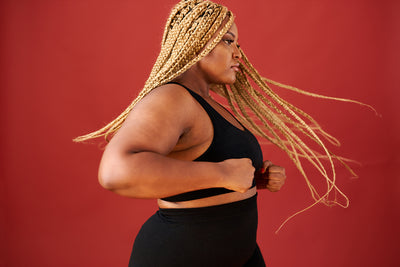Dieting with your significant other seems like a good idea, especially if you live together. You have an accountability partner to exercise, grocery shop, cook, and eat with that knows you and what you’re going through. Studies show that couples who make healthy lifestyle choices together are more likely to lose weight and keep it off.
But here's the thing: for heterosexual couples, designing a diet plan to meet the nutritional needs of each partner can be challenging because women's and men's bodies are just different. In addition, scientists have found that women need to eat fewer calories and have different nutritional needs than men, which can complicate plans to cook and eat healthy with your partner.
Caloric intake differences
Most nutritional guidelines in the US are based on a 2,000-calorie diet. So many people start with a diet attempting to consume 2,000 calories or less a day. But the calories you intake per day depends on your weight, gender, and activity level.
The Harvard Medical School caloric guidelines recommend sedentary women consume 13 calories per pound of body weight to maintain their weight; sedentary men should have 15 calories per pound. So a sedentary woman weighing 150 lbs should consume about 1950 calories per day while a 150-lb, sedentary man should consume approximately 2,250. The more active the person, the more calories needed. A moderately active woman needs 15-16 calories per pound to maintain their weight and a moderately active man needs about 17-18. A study from the University of Missouri found that female athletes need 20-23 calories per pound while male athletes need more than 22.7 calories per pound to maintain weight.
No matter the activity level, the difference in caloric needs boils down to metabolism. Men burn more calories than women. This is because men usually have less body fat and more muscles than women, even if they're the same weight and age. That leaner muscle-to-fat ratio helps to support an elevated metabolism.
Nutrients needed
In addition to needing fewer calories, women also have different nutritional needs than men. For example, women need more iron than men because of iron loss during menstruation, and women also need more calcium because of the risk of osteoporosis.
If you spend any time comparing diet plans created for or by men, there is a greater emphasis on protein. While both genders should prioritize protein, men tend to need more protein because they have more muscles and larger bodies than women. Federal nutritional guidelines recommend that protein makes up 15% of a person's daily calories, so for a 200-lb, sedentary man on a 3,000-calorie diet, about 450 calories should come from protein. A 150-lb, sedentary woman on a 1,950-calorie diet should consume about 293 calories from protein daily.
Also, for women, federal guidelines recommend that fat represent less than 30% of daily calories. So the 150-lb sedentary woman on a 1,950 calorie diet should limit fat calories to less than 585 per day, and her 200-lb inactive partner should try to stay below 900 fat calories.
The carb effect
Much like protein and calories, men need more carbohydrates than women. This is because men's bodies store fewer carbs than women's but use more. Conversely, women need fewer carbs because they keep and burn more fat than carbs when exercising.
A Columbia University Medical Center study found that certain carbs can negatively impact women's moods. The study found that post-menopausal women who consumed more refined grains and added sugar were at an increased risk of new-onset depression. However, the study found that having more dietary fiber, whole grains, vegetables, and non-juice fruit reduced the risk.
How to successfully diet with your partner?
It may seem impossible to diet with your partner with all these differences successfully. Although losing weight or getting healthy as a couple can be challenging, it's doable. Here are some tips to get started.
-
Set realistic goals. Communication in relationships is essential. This also applies to plans to get healthy or lose weight. At the outset, discuss what each of you hopes to achieve from this new diet plan. Of course, you can have individual goals, but setting goals and expectations for what you want to achieve can help you stay on track when you hit roadblocks or want to give up.
-
Get moving together. Food can be the most challenging part of getting healthy, so starting with physical activity may be a great place to start. No matter your gender, physical activity burns calories, strengthens muscles, and is suitable for you. Taking walks, working out at the gym, or doing housework together can help get you moving. If you or your partner prefer to work out alone, find singular activities that work best for you but regroup to discuss how the workout went or the challenges you face in your workout journey.
-
Identify your emotional eating triggers. Maybe you like to eat a pint of ice cream when you're sad. Or your partner must have pizza to unwind from a stressful workweek. People often take solace in food, but this habit can make it difficult to resist comfort foods. It can also be a challenge for partners who don't use food as a mood stabilizer. If you or your partner have emotional ties to food, you should discuss it and have a plan of action to avoid overindulging when you're sad, mad, bored, or feeling whatever. Maybe if you're feeling a craving, go for a walk to take your mind off of food.
-
Grocery shop together. If you're a couple dieting together, both parties should share the responsibility of making responsible food choices. Create a list of items to buy before going to the store to avoid purchasing temptations on a whim. If you can't always go to the store together, consider having a grocery shopping schedule, so each person is responsible for shopping.
-
Meal plan and cook at home. By meal planning together, you can decide what you want to eat instead of the burden falling on one person. Meal planning may prevent unplanned takeout nights, which can upend a diet. Consider cooking together or divvying up cooking responsibilities, so no one feels overwhelmed by the commitment of cooking all the time.
-
Keep in mind your bodies are different. For example, women lose weight slower than men. So you may see the pounds slipping off your partner even when you're putting in the effort to lose weight and eat healthily. But, things will eventually balance out. A study published in the British Journal of Nutrition found that the weight loss difference between men and women even out by month six with consistent diet and exercise.
- Be kind to one another. You are not a drill sergeant; your partner is not the food police. It may seem fun to point out when your partner is slipping, but it's important to remember you're both doing something life-changing and deserve grace. If they miss a workout, that's fine (if they fall off the workout wagon, that's another thing). If you eat a candy bar, that's fine (if you eat the entire Halloween candy supply, that's another thing). Remember to compliment each other, note each other's progress, and keep in mind this is a person you (hopefully) love and care about.








Leave a comment